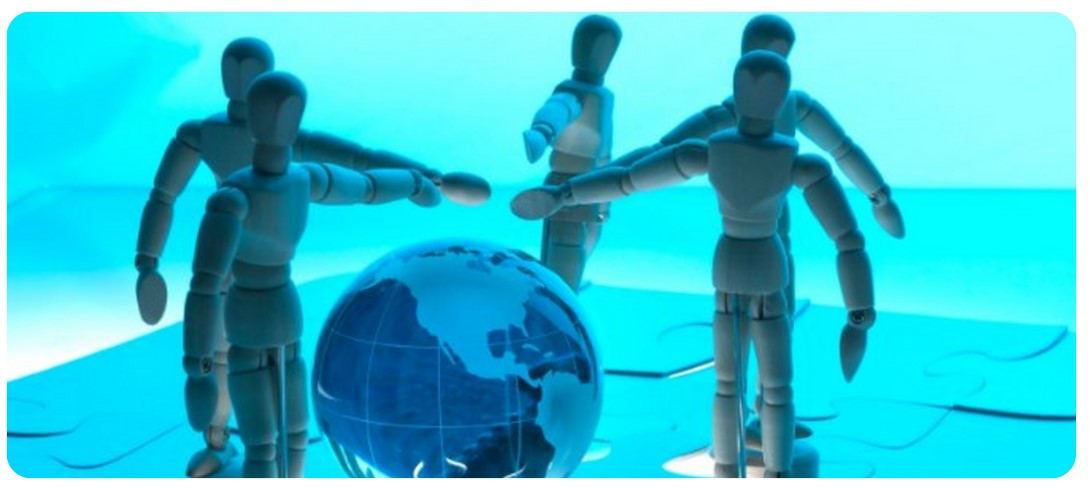
Building Multicultural Curiosity
More people are willing to work abroad, and global leaders should embrace the multiple identities of their employees, colleagues, clients and international stakeholders.
November 21, 2014
The likelihood of millennials limiting their job search to their hometown or even their country is diminishing. According to the Boston Consulting Group, 59 percent of American millennials are open to working abroad. With this increased willingness to be employed in different countries, there comes a higher responsibility of ensuring that next generation workers are prepared to be multiculturally sensitive global leaders. Furthermore, globalization and the diversification of corporations should prompt all companies to encourage employees, managers and CEOs to become multiculturally sensitive.
Kofi Annan, the former secretary general of the United Nations said, “Tolerance, inter-cultural dialogue and respect for diversity are more essential than ever in a world where peoples are becoming more and more closely interconnected.” There is certainly a need for multicultural curiosity and sensitivity. Before we can delve into practical steps to becoming a multiculturally sensitive global leader, it is necessary that we first explore what is meant by the word “culture.”
Oftentimes when people hear “culture,” they think about national origin or race. However, culture is much broader than that. It includes one’s ethnicity, religion, ability status, age, gender, socioeconomic status, family traditions, sexual orientation and more. A global leader should embrace these multiple identities of their employees, colleagues, clients and international stakeholders. Let’s examine five steps to becoming a multiculturally curious global leader.
- A global leader should be aware of his or her own cultural values and biases.
Pause for a moment right now and think about everything that makes you who you are. You may have reflected on your values, experiences, family traditions, social roles, race, faith and a plethora of other essential parts of your culture that shape you. Perhaps this question was difficult for you to answer. To be an effective global leader, one must be aware of his or her own cultural values. How can you expect to embrace and understand another person’s culture if you do not take the time to reflect on your own? This introspection lays the foundation for the global leader to learn about their cultural biases or blind spots. We all have things about our values or culture that we view as being “right” or maybe even superior to that of others. These blind spots can make us unintentionally hurtful to others in professional (and personal) relationships. A global leader should be mindful of his or her own culture to circumvent ruptures to business relationships.
- Learn about other cultures.
There are many ways that global leaders — or potential global leaders — can learn about cultures, such as taking a course, having casual conversations, learning another language, immersing themselves in a cultural or religious event that they are not accustomed to, reading books, researching articles or watching documentaries. Suppression of curiosity should not be applied to culture. Global leaders should be curious about cultural backgrounds that are different from their own. We learn by asking questions. Of course, these questions should be asked in a respectful manner and without any intentions of demeaning the other individual. People are often afraid to ask questions to someone from a different cultural background because they are concerned about appearing disrespectful. One of the easiest ways to be multiculturally insensitive is to NOT ask questions and instead make assumptions that are often laced with false preconceived notions or stereotypes. There needs to be a sense of humility for the global leader to show this cultural inquisitively.
Global leaders should have an eager mind that is ready to learn. In some western cultures, direct eye contact is valued and viewed positively. However, in some eastern cultures, direct eye contact is viewed as a sign of disrespect. Without this awareness, a global leader from a western perspective might incorrectly believe that an employee from an eastern culture is disinterested or disrespectful. Knowledge is power!
- Recognize that learning never ends.
A global leader should never stop wanting to learn about various cultures. Multicultural sensitivity is a fluid process. It does not end after you have taken a course on diversity or had a conversation with a business colleague with a different cultural background. As Bill George notes
To adapt to local cultures and market needs, companies must shift to decentralized, collaborative decision-making. That requires developing many leaders capable of working anywhere.
To address these needs, new approaches for developing global leaders are required:
- The diversity of top leadership should reflect the diversity of the firm’s customers.
- Global leaders must be effective in aligning employees around the company’s mission and values, empowering people to lead and collaborating horizontally rather than managing vertically.
- Rather than concentrating on the on the top 50 leaders, global companies need to develop hundreds, even thousands, of leaders comfortable operating in a variety of cultures.
- Developing global leaders with cultural sensitivities and collaborative skills requires greater focus on emotional intelligence, self-awareness and empowerment than on traditional management skills.
- Create a safe work environment in which everyone’s culture is valued and included.
Recent focus on the lack of diverse talent/leadership in the tech industry is a fine example to point out. No doubt, given the aforementioned trends, a global leader aims to have everyone feel included and equally important, and that there is effective business management across the globe and across cultures. Just as geopolitics and human rights requires key focus in ensuring productivity, organizations may need to engage strategists who specialize in global talent — global leadership development to align the talent strategy with business operations. In response to the tech need, TAPO Institute published this very timely and significant resource guide for the global recruitment.
- Be patient.
A global leader should be aware that change takes time. Patience is necessary to decrease the frustration from others not being as multiculturally sensitive or curious as you think they should be — patience with yourself, patience with others and patience with the organization. Everyone is on a journey, and some are further along than others. The global leader should continue to set a good example, even if it seems like a long time has lapsed before others follow.
Global leaders with strong multicultural curiosity and sensitivity are needed in this present global world of work. What steps is your company taking to develop them? How aware are you of your own culture? What have you learned about another culture within the last month? I’m curious … about your multicultural curiosity!
Monica P. Hawkins is CEO of PPDG and is an adviser to Fortune 1000 C-suite executives across the globe, focusing on alignment of business objectives with talent management systems and learning agendas. She can be reached at editor@CLOmedia.com.

